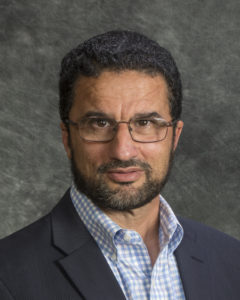How Leaders Cultivate Positive Schools
Committing to the Culture: How Leaders Can Create and Sustain Positive Schools
By Steve Gruenert and Todd Whitaker
(ASCD, 2019 – Learn more)

Steve Gruenert and Todd Whitaker have added to their series of books on school culture with this very practical, readable and well-researched work that speaks of the commitment to creating and sustaining a positive learning environment.

A couple of definitions of “culture” were presented early on in the book, enabling me to frame my thoughts as their ideas relate to schools in particular. “Culture is the personality of the building…It is who we are, not what we have…(it’s) information passed from one generation to the next explaining how to survive the environment” (pg. 1). The importance of stories as conduits of culture is emphasized as well.
Moving from theory to practice
Leaders are especially tasked with being the transporters of the school’s vision – from the theory expounded upon in the glossy marketing brochure to the daily practices found in the classroom, the administrative office, and the playground. You will find helpful steps and charts that exemplify how principals effectively lead a staff through cultural assessment, change, and monitoring.
The book does a good job differentiating between the culture and the climate of a school, the latter being based upon a particular snapshot in time and the former upon a collection of choices and emphases that have been developed, reinforced and rewarded over time.
It is much easier to change a school’s climate than it is the culture. The authors provide excellent introspective and revealing questions that will enable you to accurately assess the nature and health of your school’s culture and climate. I appreciate how the writers don’t provide quick and easy steps to developing a positive school culture. They emphasize the importance of sustaining cultural change over time. They also tell us how to avoid the growth of a toxic culture, one that works against the well-being of teachers and students alike.
Recognizing and owning roles
Throughout the book the authors develop the analogy of a school culture being akin to a movie, complete with actors and their varying roles. Each role contributes vitally to the production as a whole, and actors should be carefully, kindly, and thoughtfully mentored so as to most effectively accomplish the intent of the screenwriter.
I was reminded of the importance of working patiently and methodically with individual faculty members, either to help them refine their craft or to place them in a more effective role in our school community. Emphasis is placed upon successful recruiting, nurturing, and including – rather than simply abandoning a staff member whose performance is dragging on the culture’s positive development.
Since leadership plays a key role in sustaining a culture, we are introduced to a variety of approaches administrators might take as they institute cultural change. Each choice has accompanying challenges: the legacy builder, the progressive, and the opportunist.
Other “actors’ roles” in the school-culture movie include the guardians of the past and the outliers. If you’re like me, you will find a bit of yourself in more than one of each of the roles. Always room for improvement, right?
Real-world examples from the authors’ experiences exemplify how the theories of cultural development and the roles we assume play out in the daily life of school classrooms and administrative offices. The chapter case studies are particularly helpful because they present a particular challenge and methodically walk you through the processes that either hindered or assisted cultural development.
As I read through the various examples and case studies, I began to recognize some of the challenges we face in my own school to provide a culture most conducive to every student thriving academically, socially, emotionally, and spiritually. I believe that Gruenert and Whitaker’s latest book, Committing to the Culture, will do the same for you as you read it within the context of your particular school paradigm.
Jack Ferrante has served in public and private schools for the past 28 years as a middle school and high school classroom teacher and dean; elementary school principal, and currently as a junior high principal in San Jose, California.

































